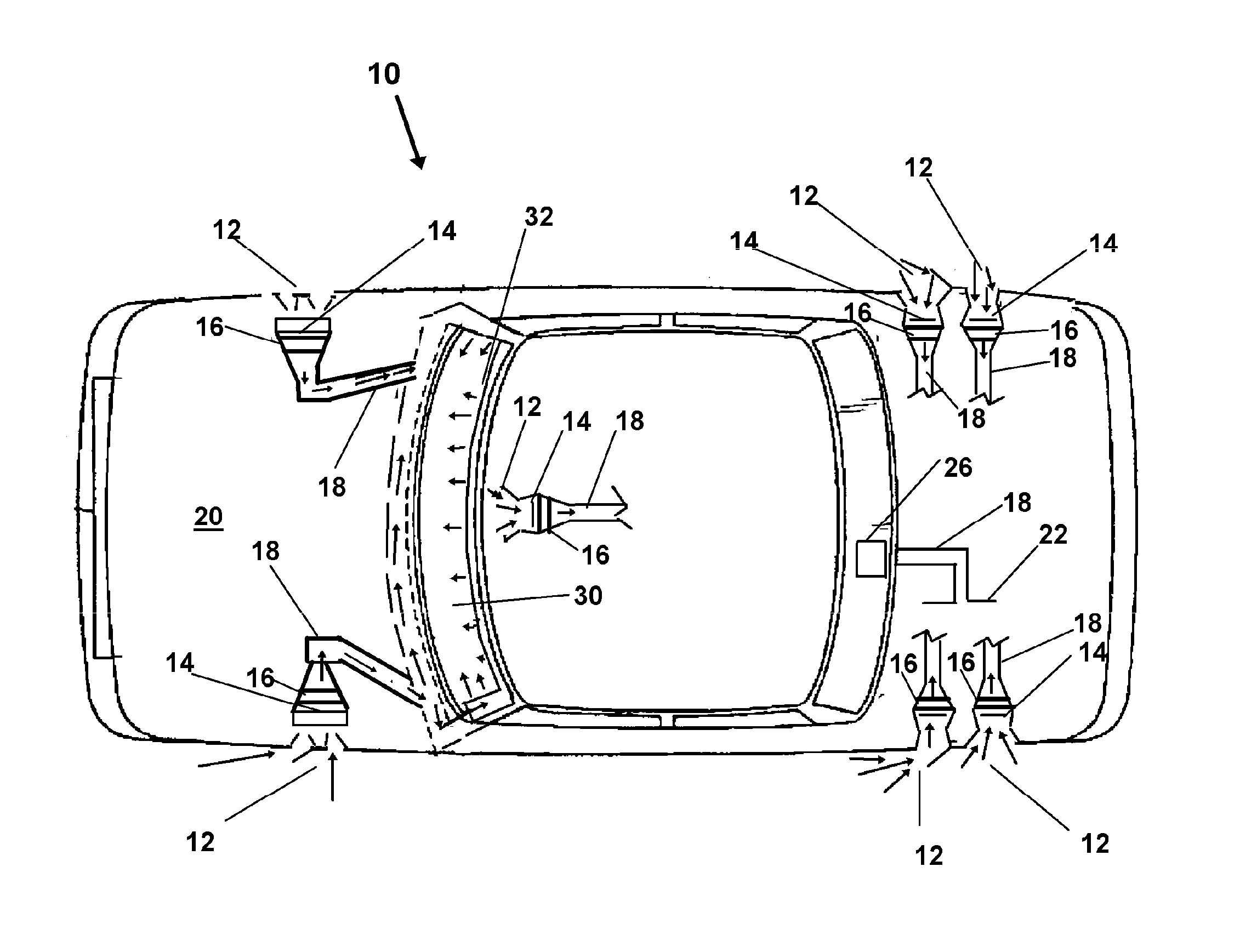Energy Generation System for Electric, Hybrid and Conventional Vehicles
a technology of energy generation system and electric vehicle, which is applied in the direction of energy harvesting concepts, machines/engines, transportation and packaging, etc., can solve the problems of large scale of turbines and requiring ample wind speed, device however is bulky in nature, and does not take into account the streamline shape of vehicles known today, so as to maximize the electrical energy generation of vehicles, reduce the effect of battery loss and large rang
- Summary
- Abstract
- Description
- Claims
- Application Information
AI Technical Summary
Benefits of technology
Problems solved by technology
Method used
Image
Examples
Embodiment Construction
[0038]Referring now to the FIGS. 1-5, wherein similar components are depicted using like numerals for identification, in FIG. 1 there is shown a plurality of recessed or aerodynamic intake apertures 12 which may be used alone, or in combination with other modes which project or have deflectors 17 which are further described herein.
[0039]As noted, the air intakes 12 are positioned to take advantage of both airstreams available. First, the airstreams developed for and from the moving car which generally run inline with the vehicle's direction of travel. Second, the airstreams from wind approaching a parked vehicle at different angles.
[0040]By situating intake apertures 12 facing the front and sides of the vehicle, two potential airstreams may be captured to generate electrical energy. The system 10 herein employing these apertures 12 at differing angles, communicates a plurality of airstreams to provide a rotational force to a plurality of rotatable fans 14 which are in operative posi...
PUM
 Login to View More
Login to View More Abstract
Description
Claims
Application Information
 Login to View More
Login to View More - R&D
- Intellectual Property
- Life Sciences
- Materials
- Tech Scout
- Unparalleled Data Quality
- Higher Quality Content
- 60% Fewer Hallucinations
Browse by: Latest US Patents, China's latest patents, Technical Efficacy Thesaurus, Application Domain, Technology Topic, Popular Technical Reports.
© 2025 PatSnap. All rights reserved.Legal|Privacy policy|Modern Slavery Act Transparency Statement|Sitemap|About US| Contact US: help@patsnap.com



